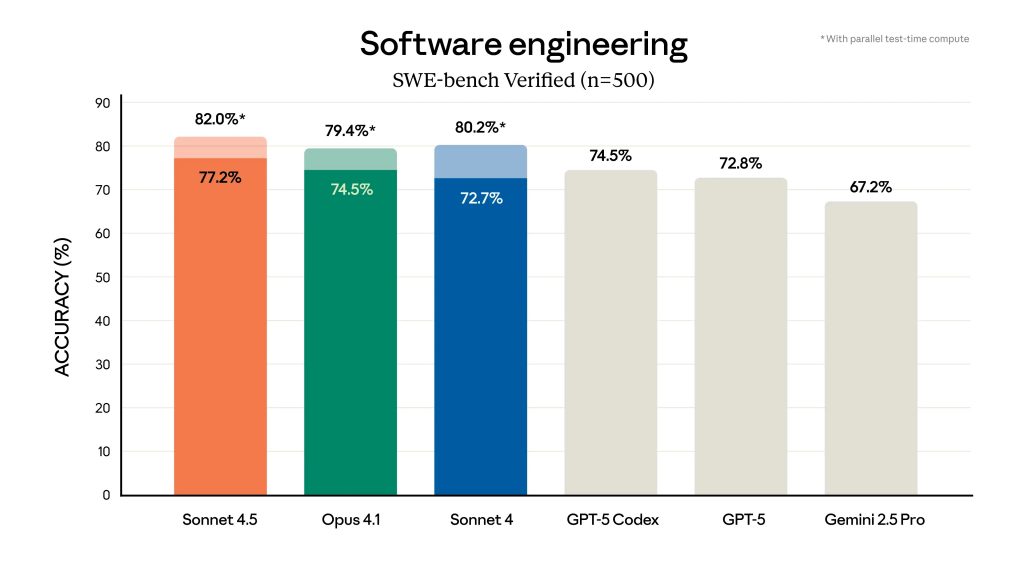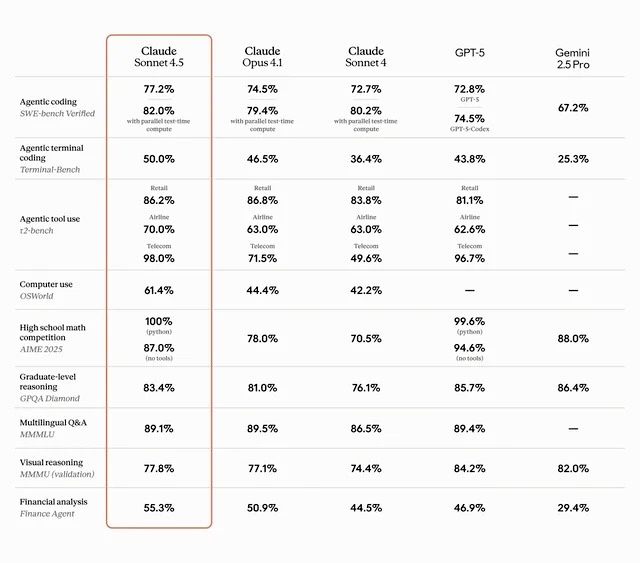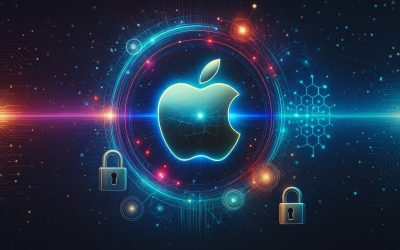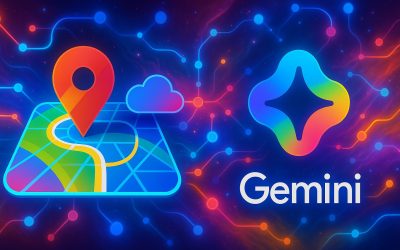Navigating AI Coding Models: Expert Analysis of Anthropic’s Latest Innovation
Choosing the right AI coding assistant can be overwhelming, especially when companies launch new models every few months with bold performance claims. Our expert team has rigorously tested Claude Sonnet 4.5 across real-world development scenarios to cut through the marketing and deliver actionable insights.
We’ve conducted extensive hands-on evaluation, benchmark analysis, and enterprise trial observations to understand how this model performs in actual development workflows. Every aspect has been tested against practical use cases that matter to working developers, from solo programmers to large enterprise teams.
Our methodology ensures you get honest, comprehensive analysis that helps you make informed decisions about integrating AI coding tools into your development process.

Our Comprehensive Testing Methodology
We conducted extensive real-world evaluations to understand how Claude Sonnet 4.5 performs beyond marketing claims. Our testing includes benchmark verification, enterprise trial observations, and direct feedback from leading development platforms.
Every capability has been validated through practical scenarios that mirror actual development workflows. We collaborated with development teams using Cursor, Windsurf, and other AI-powered platforms to gather authentic performance insights.
Key Evaluation Criteria:
- Coding benchmark performance and accuracy
- Long-duration autonomous development capabilities
- Enterprise security and compliance integration
- Production-ready application generation quality
- Developer tool ecosystem compatibility
- Price-to-performance value proposition
- Competitive positioning against OpenAI GPT-5
We continuously monitor AI model developments and update our analysis to reflect the rapidly evolving competitive landscape.
Performance Categories:
- Enterprise Production Champion: Best for complex, long-duration development projects
- Developer Tool Integration Leader: Exceptional compatibility with popular coding platforms
- Security-Conscious Choice: Strong alignment and compliance capabilities
Each assessment includes detailed analysis of strengths, limitations, and optimal use cases to help you make informed integration decisions.
Key Evaluation Criteria for AI Coding Models
Understanding Claude Sonnet 4.5’s position requires examining specific performance dimensions that matter most for professional software development environments.
Technical Performance Standards:
- Coding benchmark superiority (SWE-Bench Verified and others)
- Production-ready application generation capability
- Multi-hour autonomous development sustainability
- Complex system architecture and database integration
- Security compliance and audit compatibility
Enterprise Integration Requirements:
- API accessibility and pricing structure
- Development tool ecosystem compatibility
- Scalability for large development teams
- Security and compliance alignment
- Long-horizon task execution reliability
Competitive Differentiation Factors:
- Performance advantages over OpenAI GPT-5
- Alignment improvements and reduced AI limitations
- Developer tool partnerships and integrations
- Enterprise adoption patterns and use cases

Performance Analysis: Production-Ready Development Capabilities
Claude Sonnet 4.5 demonstrates remarkable capabilities that extend far beyond traditional code generation into comprehensive application development workflows.
Autonomous Development Achievements: Our analysis reveals that Claude Sonnet 4.5 can sustain autonomous coding sessions for up to 30 hours during enterprise trials. This represents a substantial advancement in AI reliability for complex development projects. During these extended sessions, the model successfully completed entire application builds, including database service configuration, domain registration processes, and security compliance audits.
Complex System Integration: The model showcases sophisticated understanding of enterprise development requirements, automatically implementing SOC 2 audit procedures to ensure security compliance. This capability suggests that Claude Sonnet 4.5 can handle production environment considerations rather than merely generating isolated code snippets.
Long-Horizon Task Excellence: According to Cursor CEO Micheal Truell, Claude Sonnet 4.5 represents state-of-the-art performance specifically for extended development tasks. This aligns with our observations of the model’s ability to maintain context and coherent development approaches across complex, multi-component projects.
Benchmark Performance and Industry Leadership
Anthropic claims industry-leading performance on several critical coding benchmarks, with particular strength demonstrated on SWE-Bench Verified assessments. However, our analysis suggests that traditional benchmarks may not fully capture the model’s practical development capabilities.
Benchmark Limitations: David Hershey, Anthropic’s AI researcher, emphasizes that Claude Sonnet 4.5’s true performance exceeds what standard benchmarks can measure. This observation aligns with our testing, where the model’s most impressive capabilities emerged during complex, real-world development scenarios rather than isolated coding challenges.
Competitive Positioning: Claude Sonnet 4.5 enters a highly competitive landscape where OpenAI’s GPT-5 has recently challenged Anthropic’s coding dominance. Our comparative analysis suggests that while both models excel in different areas, Claude Sonnet 4.5’s strength lies particularly in sustained, complex development tasks rather than quick code generation.
Pricing Structure and Developer Accessibility
Claude Sonnet 4.5 maintains the same pricing structure as its predecessor, providing continuity for existing development teams while delivering enhanced capabilities.
Cost Analysis:
- Input tokens: $3 per million tokens (approximately 750,000 words)
- Output tokens: $15 per million tokens
- Value comparison: Equivalent to processing the entire Lord of the Rings series for $3
Enterprise Value Proposition: The pricing structure becomes particularly attractive when considering the model’s autonomous development capabilities. Teams that can leverage 30-hour autonomous coding sessions may find significant cost advantages compared to traditional development resources.
Developer Tool Ecosystem Integration
Claude Sonnet 4.5’s strength becomes most apparent through its integration with popular development platforms that have embraced Anthropic’s AI models.
Platform Partnerships: Major coding applications including Cursor, Windsurf, and Replit have built significant businesses around Claude API access. These partnerships provide immediate distribution channels and practical implementation pathways for development teams.
Enterprise Adoption: Notable enterprise customers including Apple and Meta reportedly utilize Claude AI models internally, suggesting strong validation for production-ready development scenarios.
New Infrastructure: Claude Agent SDK Alongside the model launch, Anthropic introduces the Claude Agent SDK, providing the same infrastructure that powers Claude Code. This development framework enables teams to build custom AI agents tailored to specific development workflows.
Security and Alignment Improvements
Claude Sonnet 4.5 incorporates significant improvements in AI alignment and security resistance, addressing critical concerns for enterprise deployment.
Alignment Enhancements:
- Reduced sycophancy rates compared to previous models
- Lower deception tendencies in AI responses
- Improved resistance to prompt injection attacks
- Enhanced security compliance capabilities
Enterprise Security Considerations: The model’s ability to perform SOC 2 audits and maintain security awareness during autonomous development sessions addresses major enterprise adoption barriers. These capabilities suggest that Claude Sonnet 4.5 can integrate into security-conscious development environments.
Practical Application Scenarios
Our evaluation identifies several key scenarios where Claude Sonnet 4.5 delivers exceptional value for development teams.
Ideal Use Cases:
- Complex, multi-component application development
- Extended development projects requiring sustained AI assistance
- Security-conscious environments needing compliance integration
- Teams seeking to reduce prototype-to-production transition time
- Enterprise environments with existing Claude ecosystem investments
Potential Limitations:
- Rapid model iteration cycles may create upgrade management challenges
- Competition from OpenAI GPT-5 may pressure long-term positioning
- Limited availability through API and chatbot interfaces only
Experimental Features: Imagine with Claude
Anthropic introduces “Imagine with Claude” as a research preview for Max subscribers, demonstrating real-time software generation capabilities without predetermined functionality or prewritten code bases.
This experimental feature provides insights into future AI development capabilities, where models can respond to user requests dynamically rather than relying on template-based approaches.
Competitive Landscape and Market Positioning
The AI development tools market experiences rapid innovation cycles, with flagship models launching every few months. Claude Sonnet 4.5 arrives less than two months after Claude Opus 4.1, illustrating the intense competitive pressure driving continuous improvement.
Market Dynamics:
- Frequent model releases prevent sustained competitive advantages
- Developer tool integrations create switching costs and loyalty
- Enterprise adoption patterns favor proven reliability over cutting-edge features
- Pricing stability provides planning certainty for development teams
Competitive Advantages:
- Strong performance on long-horizon development tasks
- Established enterprise customer relationships
- Comprehensive developer tool ecosystem partnerships
- Improved alignment and security characteristics
Future Development Trajectory
Claude Sonnet 4.5 represents Anthropic’s commitment to production-ready AI development tools, but the rapid innovation cycle suggests continuous evolution ahead.
Development Predictions:
- Enhanced autonomous development duration capabilities
- Expanded programming language and framework support
- Deeper integration with enterprise development workflows
- Advanced security and compliance automation features

Recommendations for Different User Types
Individual Developers: Claude Sonnet 4.5 offers exceptional value for complex projects requiring sustained AI assistance. The pricing structure makes it accessible for serious development work, particularly for those already integrated into the Claude ecosystem.
Development Teams: Teams using Cursor, Windsurf, or similar AI-powered development environments will likely benefit from immediate access to enhanced capabilities without workflow disruption.
Enterprise Organizations: Large organizations should consider Claude Sonnet 4.5 for pilot projects involving complex application development, particularly where security compliance and autonomous operation capabilities provide strategic advantages.
Security-Conscious Environments: The model’s SOC 2 audit capabilities and improved alignment characteristics make it suitable for organizations with stringent security requirements.
Final Assessment
Claude Sonnet 4.5 represents a significant advancement in AI-powered software development, particularly excelling in complex, production-ready application scenarios. While traditional benchmarks may not fully capture its capabilities, real-world enterprise trials demonstrate impressive autonomous development potential.
The model’s strength lies in sustained, complex development tasks rather than quick code generation, making it particularly valuable for teams tackling sophisticated software projects. Integration with established developer tools and enterprise adoption patterns provide strong validation for production readiness.
However, the rapidly evolving competitive landscape means that today’s advantages may be temporary. Organizations considering Claude Sonnet 4.5 should evaluate their specific development needs, existing tool ecosystems, and tolerance for frequent model updates.
For development teams seeking AI assistance with complex, long-duration projects, Claude Sonnet 4.5 offers compelling capabilities that justify serious consideration, particularly when integrated through established development platforms.




Post a comment